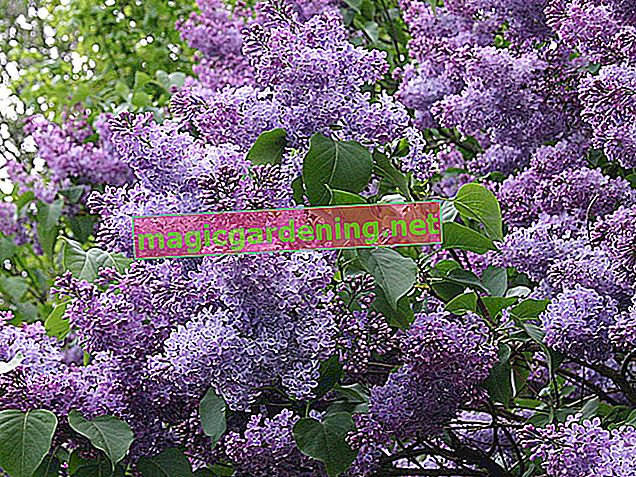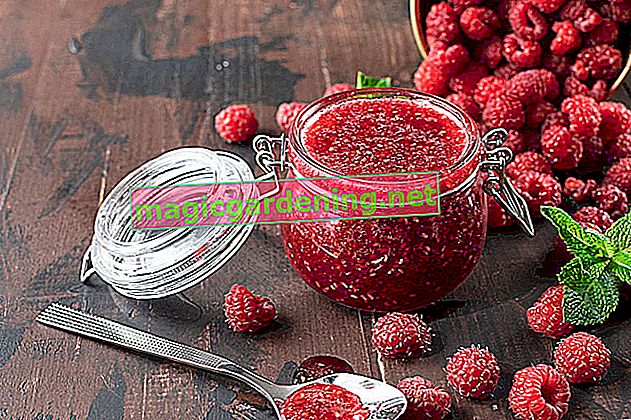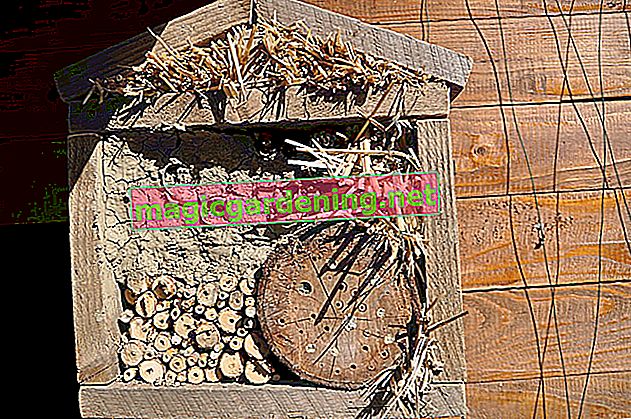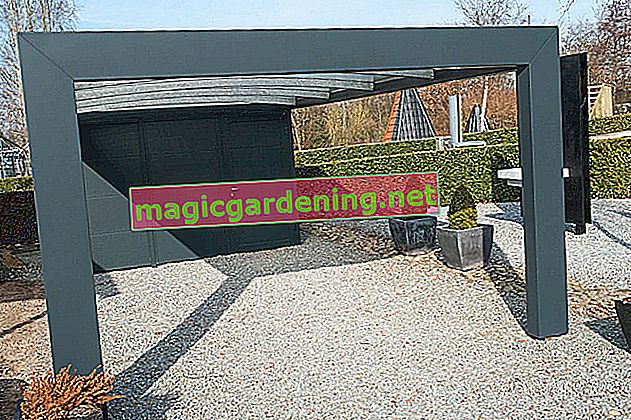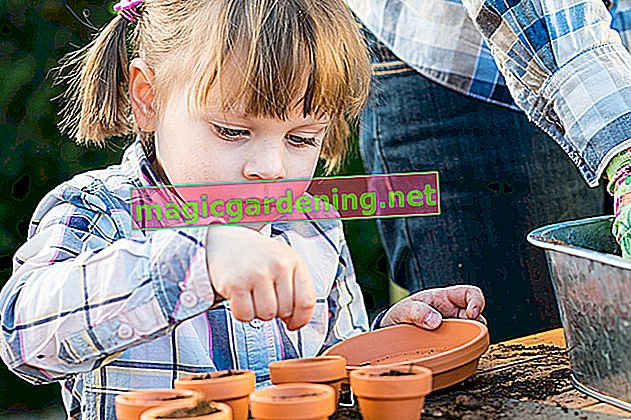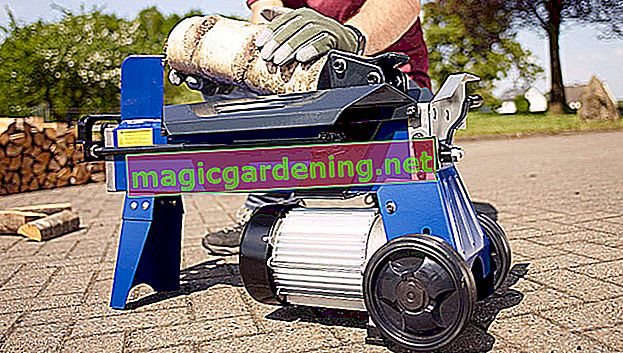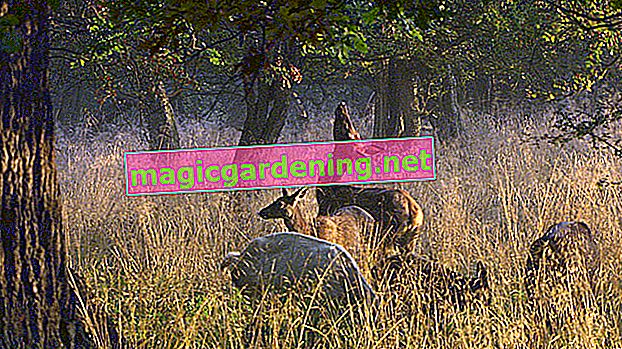
Plant bergenia properly
When the leaves fall in autumn, the planting season for bergenias begins. Proper soil preparation is now important so that the ornamental shrub takes root quickly and blooms for the first time next spring. In the sunny, partially shaded or shady location, loosen up the soil finely and add leafy soil, compost, horn shavings and some expanded clay (€ 17.50 at Amazon *). The planting pit should be 1.5 times larger than the root ball. This is placed in water before potting until no more air bubbles rise. If you put the root in the ground, the previous planting depth is preserved as far as possible. Last but not least, water generously and mulch with leaves or bark mulch.
also read
- Bergenie: Which location will you benefit from?
- If the bergenia does not bloom: reasons and prevention
- Increase the bergenia: it's worth trying!
Care tips
You are doing a good job in Bergenia care if you take the following measures to heart:
- In summer drought, water the perennial repeatedly with rain and tap water alternately
- From March to August, fertilize monthly with compost, plant manure, guano granulate or bark humus
- Fertilize the bucket bergenia liquid every 2 weeks
- Cut out withered flower stems and unsightly leaves
- Cut back the ornamental leaves close to the ground, preferably in late winter
- If the ground frosts too late, protect the flowers with garden fleece or foil
Winter protection is only advisable for bergenias in the year of planting and in pots. The root disc is covered with autumn leaves or coniferous branches. Planters are wrapped in weatherproof fabric or bubble wrap.
Continue reading
Which location is suitable?
The rumor persists that Bergenia may only be in the shadows. The German queen of Bergenia, Rosemarie Eskuche, pointed out again and again that wrap sausages achieve their optimum in sunny to partially shaded locations. Only under the blazing sun does the vitality of the flower and leaf ornamental plant suffer. While other perennials lose their beauty in a place with little light, the bergenia retains its floral charisma.
Continue reading
The correct planting distance
As a bergenia grows a lot over the years, we recommend a planting distance of 35-40 cm for common species and varieties. If the ornamental shrub acts as a ground cover, place 6-8 plants per square meter. The dwarf varieties, which are arranged at a distance of 25-30 cm from one another, are an exception.
What soil does the plant need?
Bergenia finds ideal conditions in the nutrient-rich, humus-rich soil. It likes to stretch its roots in fresh, moist to moderately dry soil. Everywhere where neither waterlogging nor desert-like drought dominate, the ornamental leaf plant remains loyal to you. This applies to the rock garden and the perennial bed as well as to the edge of your private water world.
When is the flowering time?
From April to May the colorful flowers are enthroned on fleshy stems above the basal leaf rosettes. Newer breeds have the potential for an autumn re-flowering. So cut off the withered flower stalks to make room for new shoots. A well-measured portion of compost after this cut gives the re-flowering additional energy.
Cut bergenia properly
Lovingly cared for, the Bergenie takes on enormous dimensions. In order to maintain a well-groomed appearance and, if necessary, to keep the circumference under control, repeated cutting is essential. How to do it right:
- Cut off withered flower stems before the debilitating seed growth begins
- Cut or pluck individual yellowed or withered leaves from the eyrie
- In January / February cut the entire perennial close to the ground
The sturdy flower stems and shapely decorative leaves are also wonderfully suitable for long-lasting vase jewelry.
Continue reading
Pour bergenia
The fleshy flower stalks and juicy heart leaves hide the fact that the bergenia is surprisingly tolerant of brief drought, as long as this condition remains the exception. Ideally, you should water the perennial whenever the thumb test indicates that the soil is dry. A change between soft rainwater and normal tap water meets the requirements in an exemplary manner.
Fertilize bergenia properly
To fertilize the bergenia organically, put compost, horn shavings, guano, bark humus or nettle liquid on the root disc every 4 weeks from March to August. Cultivated in the bucket, the need for nutrients increases as the supplies are used up more quickly. In this case, apply a liquid fertilizer every 14 days during the period mentioned. Alternatively, press fertilizer sticks (€ 1.45 at Amazon *) with long-term effects into the substrate according to the manufacturer's instructions.
Overwinter
An adult bergenia takes normal winter weather with temperatures down to - 28.4 degrees Celsius calmly. It becomes problematic for the ornamental shrub when the snow does not appear in the freezing cold. In addition, the early flowering is always threatened by belated ground frosts. The following measures must therefore be observed:
- Cover the root ball with autumn leaves and coniferous branches in the year of planting
- If there is a risk of ground frost during the flowering period, put a fleece or film over it
- Water the plants on mild days when it is cold
Every winter, planters are sheathed with jute tape, bubble wrap or fleece. If the bucket isn't on a plant trolley anyway, slide a block of wood underneath.
Multiply bergenia
Many a hobby gardener has a passion for collecting once the numerous advantages of Bergenia are known. Good to know that there are no hurdles to overcome for offspring. The following methods have worked well:
- Division of the rhizome ball in autumn or spring
- Cut off runners so that they can take root in the pot as 5 cm long root cuttings
- Sowing the seeds on the windowsill
While direct sowing is likely to give you a headache, sowing behind glass is uncomplicated. Spread on seed soil or peat sand, germination progresses rapidly at 20-23 degrees Celsius and uniform moisture.
Continue reading
Is Bergenia Poisonous?
If there are children and pets in your garden, the bergenia is an ideal planting. Since the majestic ornamental shrub does not contain any toxic ingredients, it can be cultivated in the family garden with a clear conscience.
Continue reading
Nice varieties
- Oeschberg: Premium variety with dark red, shiny ornamental leaves under pink flowers and the potential for re-blooming
- Bressingham White: Impresses with white and pink flowers, red-green heart leaves and bronze-colored autumn leaves
- Baby Doll: Magnificent dwarf variety that sets picturesque accents in the small garden all year round; Growth height 25-30 cm
- Admiral: Magnificent bergenia with pink flowers on dark red stems and upright leaves that turn red in winter
- Evening bells: Elegant hybrid with unusual, dark red bell flowers over fresh green heart leaves

